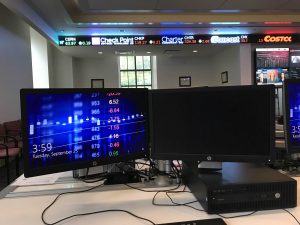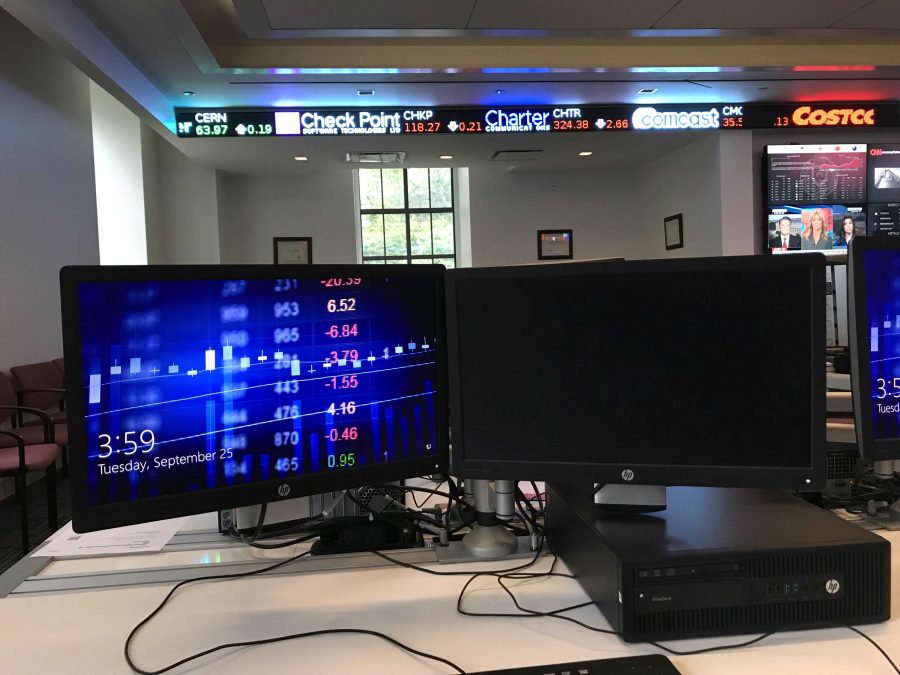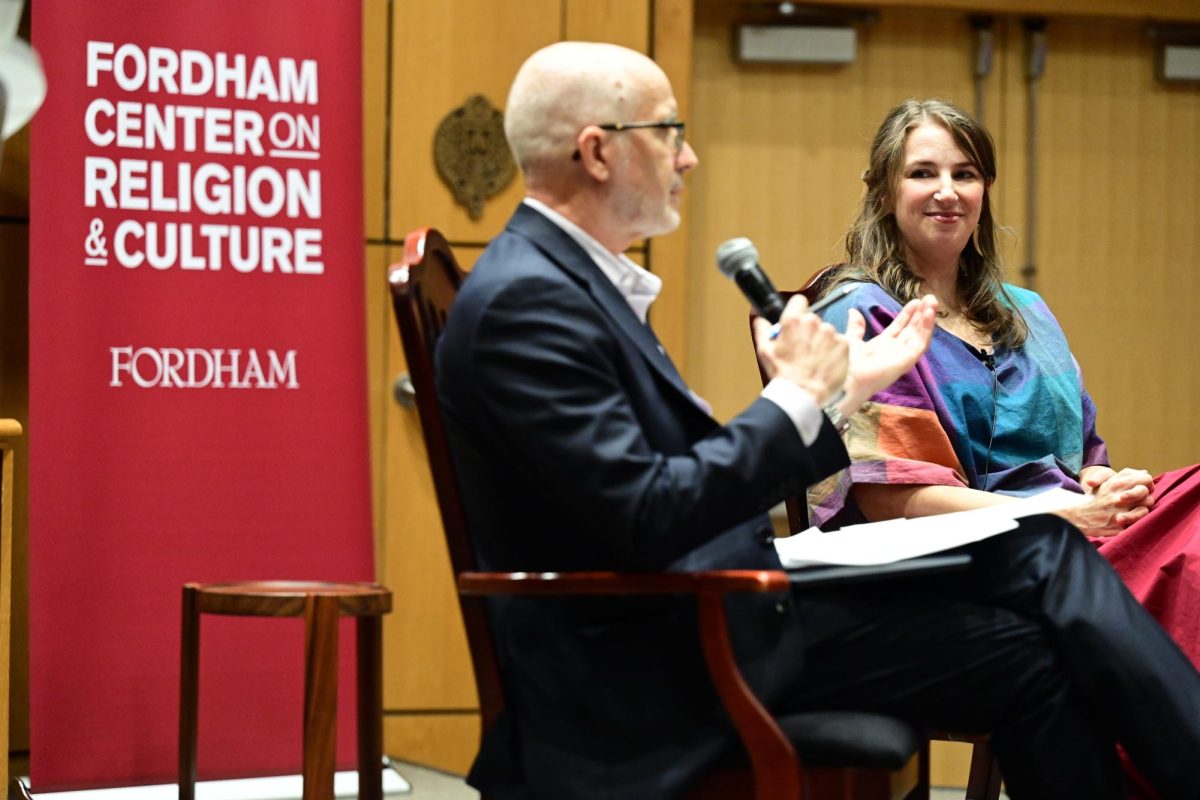
By Eliot Schiapelli
James Kelly’s class mimics a real assets management company in which many of his students hope to work, distinguishing it from other classes at Fordham and other universities.
The two semester long, six credit class, called Student Managed Investment Fund (SMIF) manages roughly $1.6 million of Fordham’s endowment. They meet for three hours on Wednesdays in the Gabelli trading room to discuss how to invest the funds.
“The objective is to teach the students all there is to know about investing anywhere in the world,” said Kelly. “You would be amazed how quickly students adapt and learn and start to feel comfortable in thinking globally and understanding the relationships between all the asset classes.”
When the class started eight years ago, they were given one million dollars, but over the years they have never had a losing semester and have made almost $600,000.
Students have the opportunity to apply to the program during their junior year. Letters go out to any Gabelli junior with above a 3.5 GPA. Kelly says they usually have about 50 applicants but can only take 14. This year’s applications are due Oct. 25.
The students in the class are split into two-person teams that focus on different business areas from technology to emerging markets. Students in their first semester of the class are analysts and students in their second semester are portfolio managers. Each team consists of an analyst and a portfolio manager.
During a typical class, students discuss how current events are affecting the market and then launch into a discussion about how each sector is doing. They also give professional presentations discussing the current state of the global economy.
Finally, after a ten minute break they launch into discussion of their fund. They take time to discuss problem stocks. These are stocks in a sector that is falling or individual companies that are falling. Students then present background on the stock followed by a recommendation to hold or sell.
After class, the senior portfolio managers will vote on the younger analysts’ suggestions to buy, sell and hold.
In addition to these positions, some students are managing directors and investment officers creating a management portion of the class.
Patrick Josephs is the chief investment officer. He said he appreciates the real world experience the fund gives him.
“You’re managing real money and you have to make real important decisions, so that really drew me into the course,” he said. “Also, the learning experience and the analysis behind it – how it’s applicable to talking to interviewers. In every interview I bring up my experience with the student managed fund. Just the hardcore analysis and the technical skills we gather.”
Roman Szul said he also found it an important learning experience.
“It’s more interesting than your typical class, not as academic, more tied into what’s going on in the real world and current events,” he said.
Other schools have student managed investment funds. It is a concept that has been around for about 20 years, according to Kelly. However, Kelly said that what separates Fordham’s class is that other schools do not have funds the size of SMIF. Other funds usually hover between $200,000 and $500,000. They also lack global funds. Instead, Kelly said he lets his students invest wherever they think is best, not just domestically.
What sets Kelly’s curriculum apart from other classes at Fordham is the aspect of real life money management. Students in SMIF are working with the real financial information in real time to make the same decisions they may make in their careers.
Last week, two students pitched a plan to buy shares of Ali Baba, a Chinese technology company, and Microsoft. They went through why the companies were on solid footing, why they had the potential to grow and why it was a good time to buy. The portfolio’s other stocks include TJ Maxx, Mastercard and Medtronic.
SMIF is more stable than most investment funds according to Kelly. This means when the market falls dramatically SMIF is not subject to these fluctuations, but also when the market does better SMIF remains relatively the same.
This is due to the parameters Kelly sets for his students. They must invest in both stocks and bonds, and cannot invest more than three percent of the entire fund in one stock.
Kelly brings professional Wall Street experience to the class. He spent 35 years there before coming to Fordham and designing SMIF’s curriculum.
Kelly said the collaborative aspects of the class are important, and both Josephs and Szul remarked on how talented the class is as a whole.
“The Student Managed Investment Fund draws some of the smartest, most motivated kids Gabelli has to offer and working with them has given me insight into how a fund is structured and how teams work,” said Josephs.








































































































































































































